- News
- Reviews
- Bikes
- Accessories
- Accessories - misc
- Computer mounts
- Bags
- Bar ends
- Bike bags & cases
- Bottle cages
- Bottles
- Cameras
- Car racks
- Child seats
- Computers
- Glasses
- GPS units
- Helmets
- Lights - front
- Lights - rear
- Lights - sets
- Locks
- Mirrors
- Mudguards
- Racks
- Pumps & CO2 inflators
- Puncture kits
- Reflectives
- Smart watches
- Stands and racks
- Trailers
- Clothing
- Components
- Bar tape & grips
- Bottom brackets
- Brake & gear cables
- Brake & STI levers
- Brake pads & spares
- Brakes
- Cassettes & freewheels
- Chains
- Chainsets & chainrings
- Derailleurs - front
- Derailleurs - rear
- Forks
- Gear levers & shifters
- Groupsets
- Handlebars & extensions
- Headsets
- Hubs
- Inner tubes
- Pedals
- Quick releases & skewers
- Saddles
- Seatposts
- Stems
- Wheels
- Tyres
- Health, fitness and nutrition
- Tools and workshop
- Miscellaneous
- Tubeless valves
- Buyers Guides
- Features
- Forum
- Recommends
- Podcast
feature
8 reasons not to get disc brakes — find out the hassles before you switch
Disc brakes have become an increasingly important part of the road bike world over the past few years, but while the benefits of disc brakes are well documented, they bring with them challenges and problems too.
Here are some of the issues that we've experienced and heard about.
1 Disc brakes add weight
The all-up weight of a disc brake bike is higher than that of a rim brake bike.
Levers, brake callipers, hoses, fluid and rotors weigh more than an equivalent rim brake setup. Manufacturers often try to minimise the difference but don't forget that disc brake hubs are heavier too, and disc brake wheels are often built up with more spokes of a wider gauge, although the lack of a brake track means that disc-specific rims are generally lighter. The thru axles that are used with many disc systems are heavier than quick release skewers.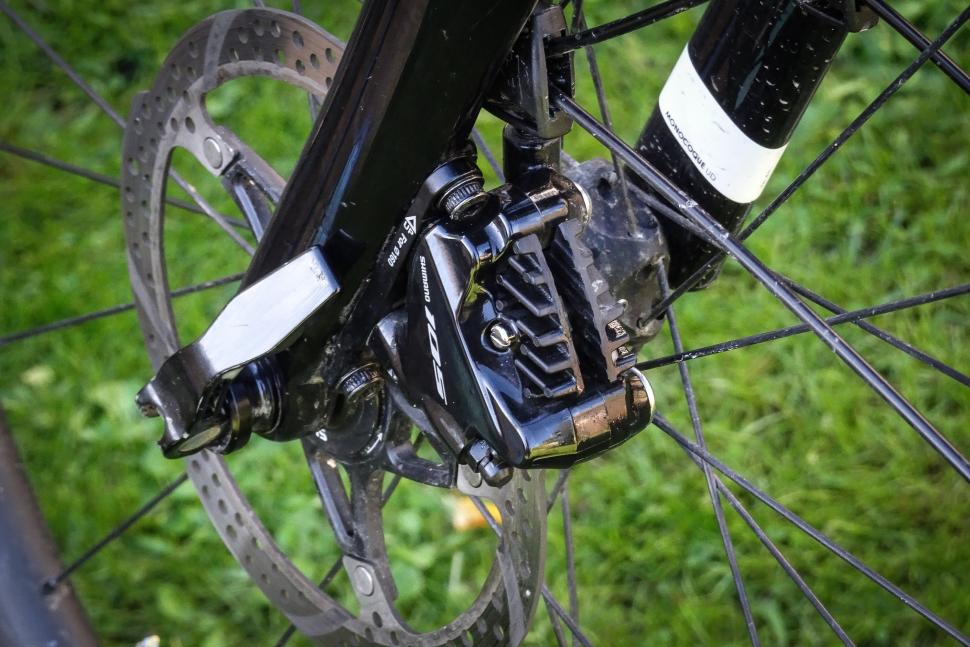
Read Everything You Need To Know About Disc Brakes
The weight difference isn't huge but it can often be around a pound over the whole bike when everything is taken into account.
2 Disc brake rub can be an issue
Early disc-equipped bikes borrowed the 74mm post mount standard from mountain bikes, where the brake calliper is simply bolted directly onto the frame or fork and adapters are used to accommodate different rotor sizes.
To try and improve the appearance of discs on road bikes, Shimano introduced its flat mount system. It’s an open standard that has been quickly adopted by other disc brake manufacturers. The vast majority of new disc brake road bikes are flat mount.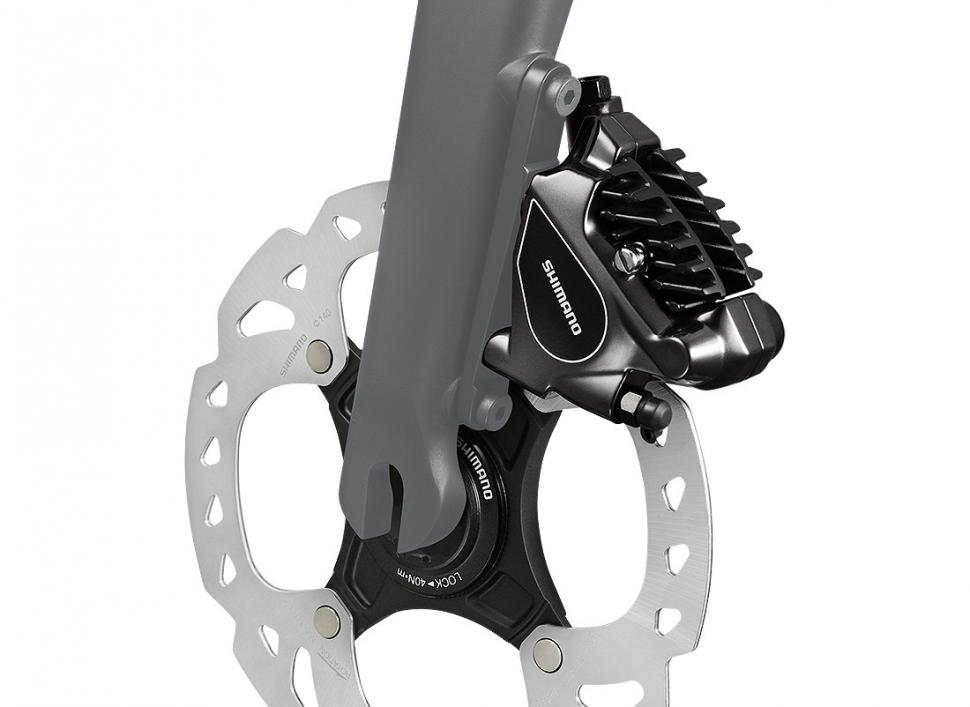
“[Flat mount offers a] smaller and more compact interface with the frame/fork for improved integration, reduced weight and better tool access for easier adjustment,” Shimano told road.cc.
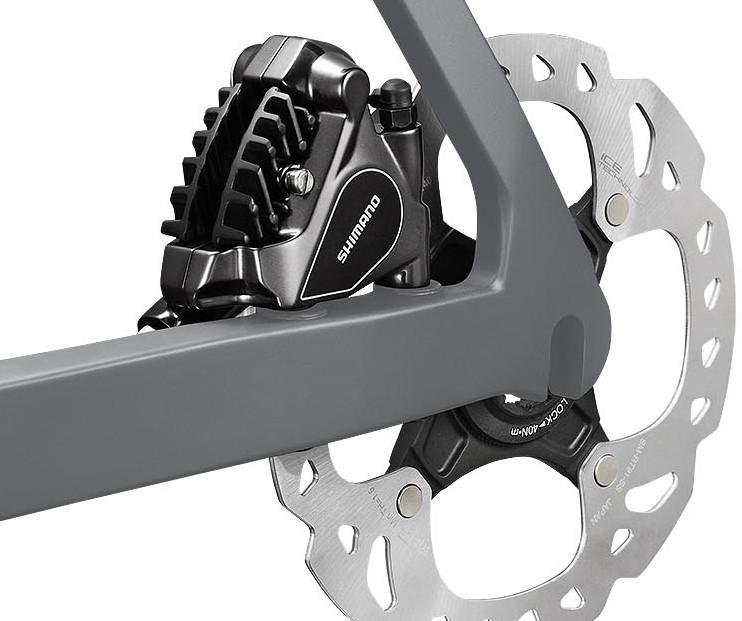
There’s no doubt flat mount disc callipers are smaller, better looking and lighter than the bulkier post mount callipers. The actual calliper mechanism is identical and there are no changes to the way the hose connects and the brake pads are installed. The key difference is in the way the calliper is mounted to the frame.
Where post mount callipers are bolted from above directly into the frame and fork, flat mount callipers sit flush with the frame and fork and the bolts are threaded in from below and directly into the calliper, pulling it down onto the frame. At the front, the calliper is fixed to a thin adapter which is bolted to the fork.
Depending on frame design and disc rotor size, post mount often needs a large and ugly adapter to provide the correct spacing over the rotor. On mountain bikes with many different frame designs and more rotor sizes in use, that versatility is a good thing, but the road market leans towards just 140mm and 160mm rotor sizes, for which flat mount has been designed.
We’ve had mostly good experiences with flat mount on the disc-equipped bikes we’ve tested, but there have been a couple of incidents of brake rub, and there's nothing more annoying.
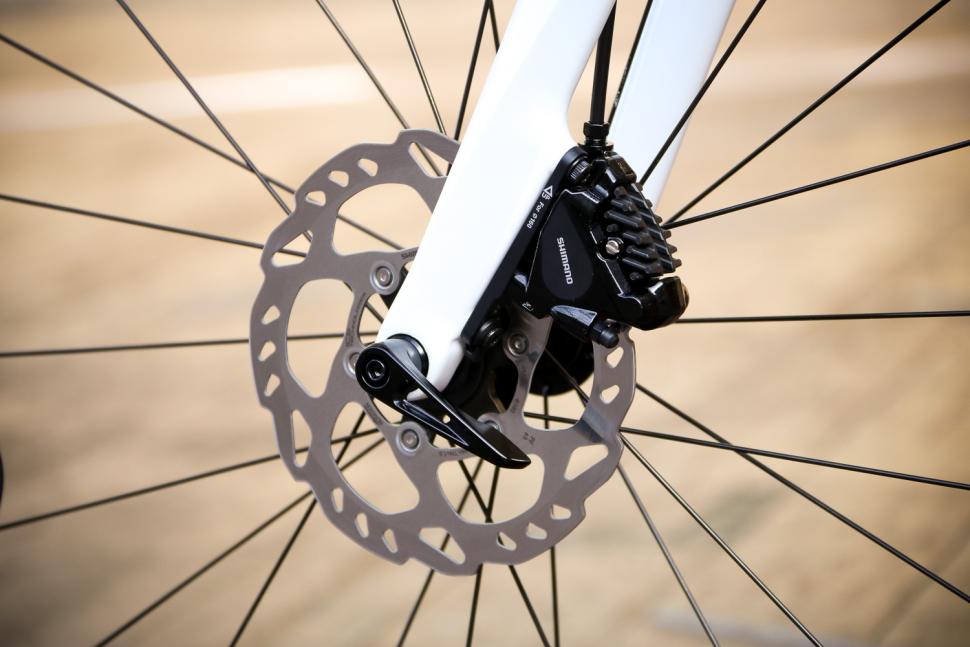
We asked Shimano about this problem and it told us that cleanly faced mounts are very important.
“As with post mount, a plane contact area (facing) always helps, as does the size of the disc (smaller is better). Centerlock rotors on good stable axle bearings (compared to 6-bolt rotors on lightweight hub axles) also help with alignment. The construction of the fork is also important (stiffness balance left/right),” said Shimano.
You'd hope a frame or fork manufacturer would make sure that the contact area was right, but in our experience this isn’t always the case.
Facing tools ensure the brake mounts on the frame and fork are smooth and level and provide perfect alignment. They're expensive and not really suitable for most home mechanics, although all good bike shops should be able to help you out here. Park Took does an adapter for its DT-5.2 Disc Brake Mount Facing Set and you can see it in action in this video.
The other solution to disc brake rub is to adjust the calliper on the frame/fork. With post mount it’s relatively easy: just slacken off the bolts, pull the brake lever and tighten the bolts to centre the calliper over the rotor.
“The range of adjustment for flat mount is the same as for post mount," says Shimano. "The difference is that the side-to-side adjustment is no longer on the calliper but in the slot hole instead. Shimano recommends that this hole is 4 x 5.2mm (+/- 0.1mm) but sometimes manufacturers don’t follow these recommendations. For the front calliper the adjustment is in the adaptor plate with the same hole dimensions.”
Not all manufacturers are adhering to the requirements as closely as they should. In many cases, the flat mount range of adjustment appears to be less than in post mount systems. We like flat mount but it does mean you are at the mercy of bike companies ensuring the mounts are manufactured correctly.
3 Disc brakes affect aerodynamics
Like any other external component, disc brakes affect aerodynamics. Some manufacturers have stated that the rim brake version of a particular bike is more aerodynamically efficient than the disc brake model, but it's not as simple as saying that rim brakes are always more aero.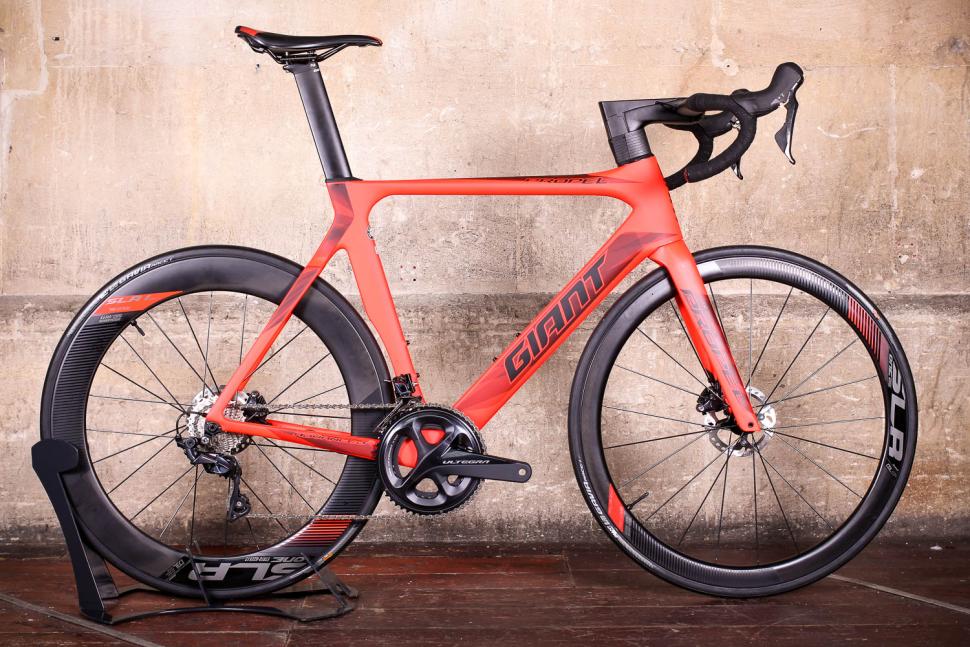
When Giant revealed its Propel Disc in 2017, for example, it said, "Engineers found that, with proper integration, a disc-brake design can actually improve aero performance compared to rim-brake configurations.
“This is because the location of traditional callipers (either in front or behind the fork crown/ legs) creates 'dirty' air'. Opening up the fork crown area (by placing the disc-brake callipers down at the hub) means that the air hitting the new disc-brake calliper has already been disrupted by the leading edge of the tyre/wheel. This effect is further enhanced by an asymmetric fork that helps smooth out airflow over the calliper.”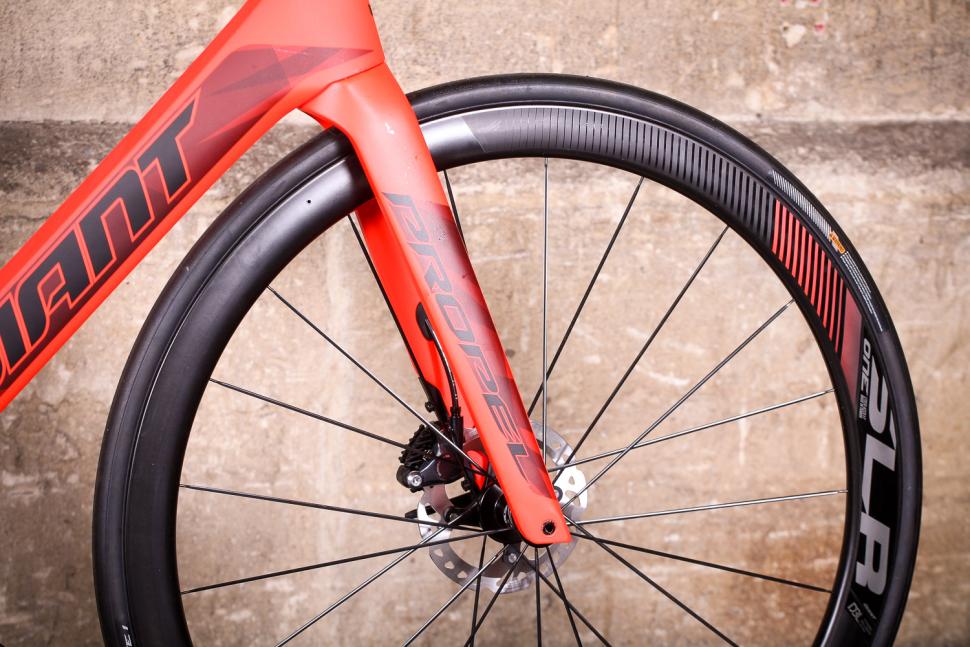
A handful of new aero road bikes, like the Cannondale SystemSix and 2019 Specialized Venge, are disc brake-only.
4 Choosing pads is a minefield
Switch to a disc brake bike and you'll eventually have to choose new pads... and that's a minefield.
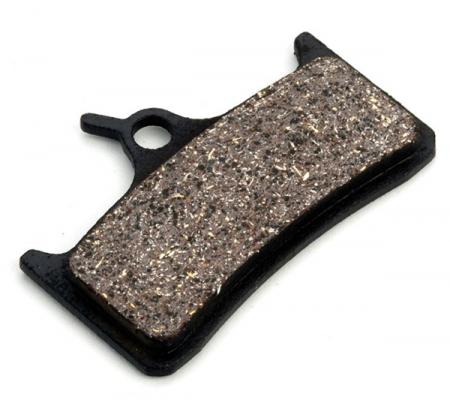
All pads are made by mixing various powdered additives with a binding agent and then squashing it all together at high heat and pressure to form a solid block on the backing pad. What's in the mix of powders has a major effect on the pad's properties.
Most new bikes come fitted with resin pads. They're made from non-metallic additives such as rubber, glass, carbon and Kevlar to provide an all-around pad that works for most people but isn't very durable under hard use.
Find out more about disc brake pads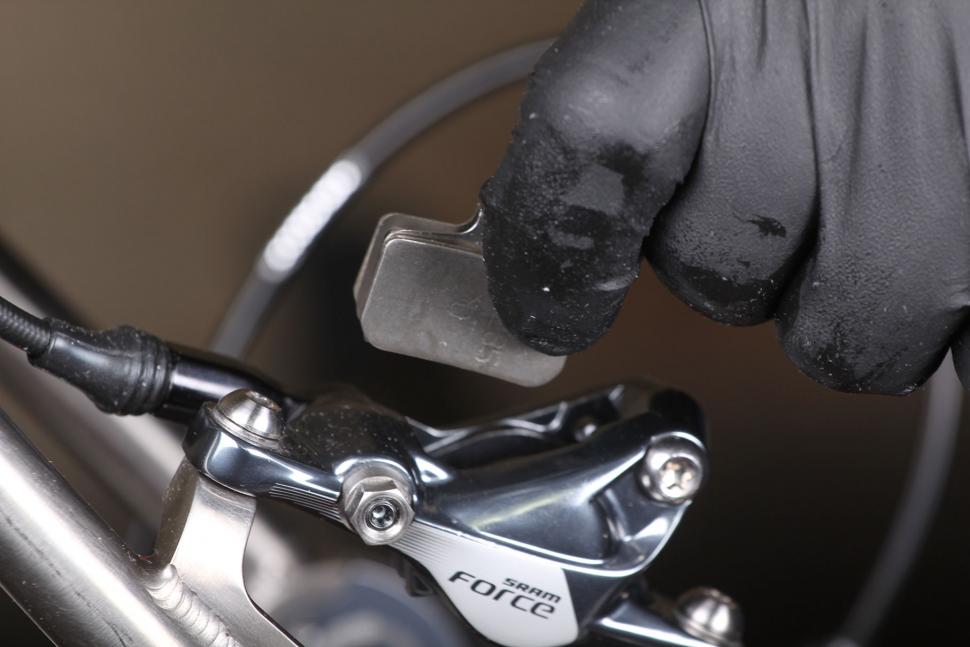
If you live anywhere hilly and/or ride in all weathers then you're probably better off switching to more expensive but much longer lasting sintered pads. Also known as metallic brake pads, these use a very high proportion of metallic fillers such as copper, steel and iron. They provide strong, effective braking at high pad temperatures although their bite can be poor when they're cold and they'll wear out your rotors quicker than resin pads.
5 You need to bed in new brakes
New disc brake pads and rotors don't immediately perform to their full potential – they need bedding in first. This is a process that distributes pad material over the rotor to increase the friction, and maximises the contact area between the two surfaces.
Here's how to look after disc brakes to get the best performance out of them
Thankfully, bedding in is pretty straightforward. Here's SRAM's advice:
"Accelerate the bike to a moderate speed and then firmly apply the brakes until you are at walking speed. Repeat this process 20 times. Then accelerate the bike to a faster speed and apply the brakes until you are at walking speed. Repeat this process 10 times. It’s important that during this process you never come to a complete stop or lock up the wheels at any point."
This will improve the performance of your brakes massively and prepare them for normal riding.
6 Maintenance involves a new set of skills
Chances are that you know how to adjust rim brakes and swap the pads, and probably how to change the cables too. You might have been doing it since you were a kid. Depending on your cycling background, disc brake maintenance might be entirely new to you.
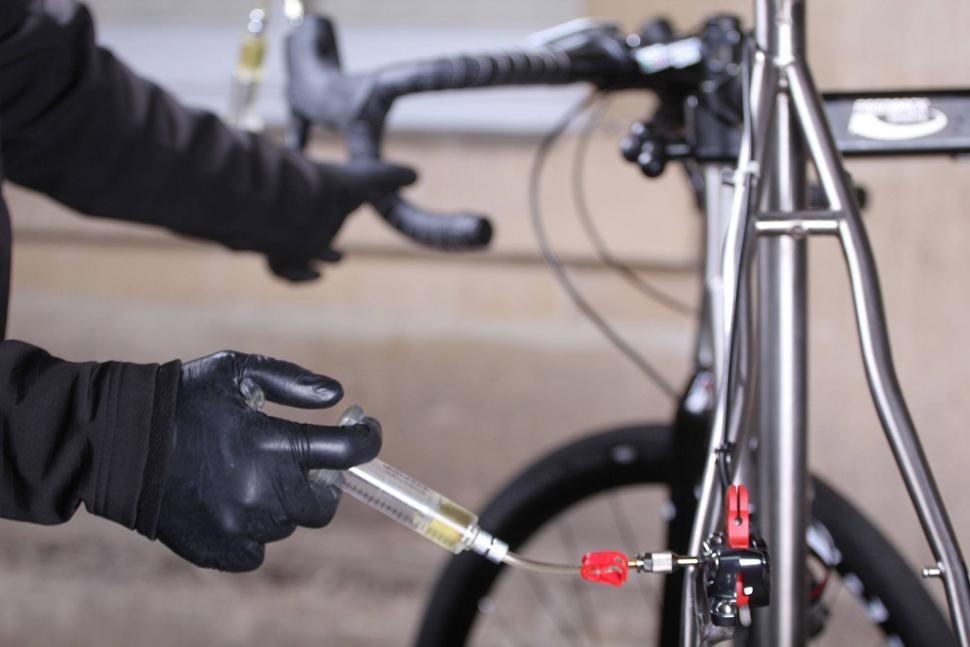 One issue you could encounter with hydraulic disc brakes is a soft and mushy feel because of air in the system. This requires bleeding and means either a trip to a bike shop or shelling out on a bleed kit. Each manufacturer has its own bleed kit. Shimano and SRAM, for example, use different techniques and fluid.
One issue you could encounter with hydraulic disc brakes is a soft and mushy feel because of air in the system. This requires bleeding and means either a trip to a bike shop or shelling out on a bleed kit. Each manufacturer has its own bleed kit. Shimano and SRAM, for example, use different techniques and fluid.
Bleeding a hydraulic disc brake system isn't the most onerous of tasks but you will need to get the hang of it while following a guide or watching one of our videos.
7 They can squeal!
It's true that rim brakes can squeal but we reckon that disc brakes are worse offenders.
The most common cause of disc brakes squealing is contamination of the rotor or pads. You have to be careful when using spray lubricants on a bicycle with disc brakes, or avoid them altogether.
Find out how to stop your brakes squealing
“Cleaning your rotors regularly with a specific (oil-free) disc brake degreaser is a good way to avoid squealing brakes," says Shimano. "Cleaning your pads too can help quieten things down — you can try some sandpaper or grinding the pads — but if the grease has soaked through the pad, you might need to replace them. Don't use a degreaser or chemicals on brake pads, though.”
It’s harder to clean disc brake pads than rim brake pads, largely because you have to remove them from the bike in the first place.
What's the best way to clean disc brakes?
Squealing pads can also be a sign that the pads are worn out. It's a little more tricky to take a close look at disc brake pads than it is with rim brake pads, although taking the wheel out can make the task easier.
8 Rotors wear out... eventually
One of the advantages of disc brakes is that they don't wear out the rims of your posh carbon wheels, but don't forget that you will wear out the disc rotors. Thankfully, rotors aren't particularly expensive.
Different brands give different minimum thicknesses for their rotors (the figure is often printed on the rotors). Go beyond that limit and things become dangerous, so keep an eye on 'em.
Mat has been in cycling media since 1996, on titles including BikeRadar, Total Bike, Total Mountain Bike, What Mountain Bike and Mountain Biking UK, and he has been editor of 220 Triathlon and Cycling Plus. Mat has been road.cc technical editor for over a decade, testing bikes, fettling the latest kit, and trying out the most up-to-the-minute clothing. He has won his category in Ironman UK 70.3 and finished on the podium in both marathons he has run. Mat is a Cambridge graduate who did a post-grad in magazine journalism, and he is a winner of the Cycling Media Award for Specialist Online Writer. Now over 50, he's riding road and gravel bikes most days for fun and fitness rather than training for competitions.
Latest Comments
- Laz 1 hour 3 min ago
hopefully, that will be the last time we see that van in drivable condition
- Nick T 2 hours 19 min ago
Come again chief? The Tarmac in size 56 has a 73.5 degree HTA, the Addict in the same size comes in at 73.4 degrees. In terms of bike fit that's...
- TheBillder 4 hours 1 min ago
My new double glazed wooden framed sash windows are £1600 plus vat per (quite large) window. House built in 1904. The cost includes fitting and...
- galibiervelo 4 hours 17 min ago
We promote #bikefriday You dont need it - go for a spin. Nice bikes and kit are lovely, but not as noice as a dawn spin this friday morning with a...
- David9694 4 hours 20 min ago
Council acting like ‘the Sheriff of Nottingham’ with parking charges...
- David9694 4 hours 24 min ago
Man taken to hospital after vehicle crashes into pub...
- David9694 4 hours 34 min ago
Car flips in Millennium Way, Sheerness, near former Aldi supermarket that reopens as Home Bargains this weekend...
- RoubaixCube 5 hours 3 min ago
Ive been using the same £2-3 dish brush I bought from wilko, tesco or pound land for as long as I can remember. I dont understand why anyone would...
- S.E. 6 hours 39 min ago
I'm thinking CX tyres...
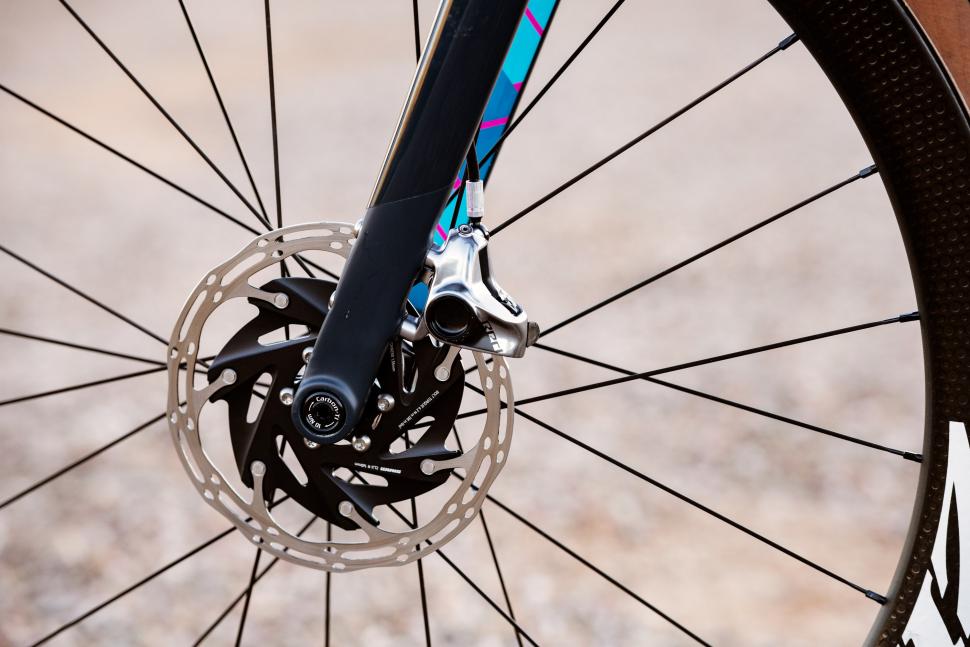
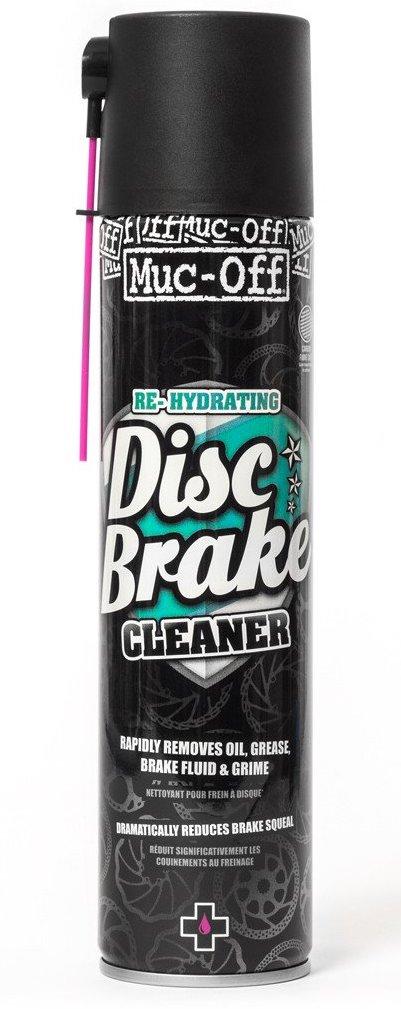
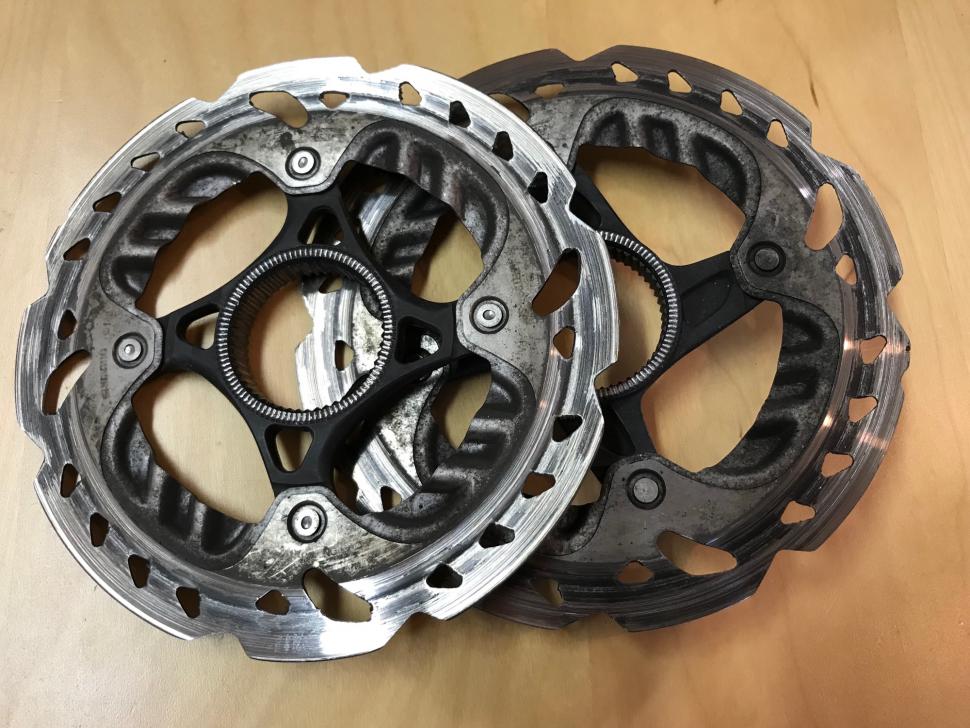
Add new comment
206 comments
I have ridden a copuple of hire bikes with discs but have no personal experience of riding with disc for any length of time. I have friends who use them and they love them but then they also moan alot about brake rub, refilling them, travelling with them etc. I've also had a couple of mates who've broken front spokes through the extra torque the rotor creates - regardless of the wheel design.
I can read weather forecasts and have far too nice a summer bike to want to ride in the wet. I would use discs on a winter bike but having crashed on ice more than once I ride in the attic on Zwift all winter these days. It's easier, more enjoyable and I get more miles in on Watopia than I would on the roads of Lancashire betwween November and April.
Sure, of course discs brakes bite better in the wet but being able to brake later on discs would be a false comfort because if the road is slippery and the wheel slows too quickly you are coming off regardless of the braking system. Stopping distance is always trumpeted by road converts to disc and they always point to cars and mountain bikes but cars are braking from faster speeds and mountain bikes use disc brakes to keep the braking surface cleaner - not to brake more suddenly on slick surfaces. I wouldn't be going fast enough on wet roads for braking distance to really make a life saving difference as I avoid wet roads. The last time I got caught on wet roads was descending off the Peyresourde into Louchon last September during the Raid Pyrenees. I wasn't racing down the descent as I wanted to finish the 5 days - not pretend I was Chris Froome. With discs I may have been able to save 20 seconds on my descent but feathering my rim brakes was just fine.
In hot weather and as a heavier rider I am more likely to appreciate the better heat loss from rim brakes and being able to get the bike out of the bike box and straight on the road with no potential hydraulic issues. Happy that disc brakes are available but happy to stick with rim brakes.
a
Just watched that very damp Elite Mens' World Champs road race and noticed the discs howling away from the on-bike footage, so they must've been loud. Makes me feel less bad about mine, which in those conditions would also be announcing their presence.
Related issue: how do you best measure rim wear? I have a few old rim-braked wheels, a digital caliper and old fashioned micrometer. I'd like to know which are terminally gone and which might be worth saving.
Says it all really, even the pro mechanics can't stop the bloody things squeeling!
Disc brake threads make me laugh. I'm still on rim brakes, but if someone else wants to ride them, who cares?
I can't help but think it's a bit of the same green eyed monster that rears its head in Rapha threads. Someone else has something newer/shinier/dearer.
I agree with that. The only reason I went with discs is to reduce potential rim wear, that's pretty much it.
'a pound heavier'? WTF? This is 2020. Weight is in metric unless your live in a weird place or read the Daily Express. Why not quote the price in groats and measure distance in furlongs?
Good to see the failing for discs.
I have a disc Winter training bike but I'd be fine if it were rim brake. All my other bikes are rim brake and very happy with them.
Two bikes, one with rim brakes, one with discs. Rim brake one stops more consistently and is much easier to adjust and fettle, even on a ride if you ding a wheel. I have mine set up with really tight clearances and they happily stop my considerable bulk at speed enough to do a stoppie. Admittedly I don't ride that bike much in wet weather, but if it's wet I'm riding slower and taking more care anyway. I think the "but rim wear" argument for aluminium wheels isn't an issue unless you're stop-start commuting in traffic. And clearly that, along with full carbon wheelsets, is where discs really come into their own on the road.
Never had any incidents or problems with rim brakes after riding and racing for over 30 years... that more or less sums up how much I feel I need them....
You don't, it's just that the selection isn't that great or is hidden amongst the forest of the disc braked types.
I was eyeing up earlier this week a Scandium Voodoo CX frameset with carbon seat stays/carbon forks as a basis to build up from. 2.4kg incl headset and the bonus of a std threaded bottom bracket and will easily take 45mm tyres if not more.
V pegs, but that means you can use mini V brakes which are a great combination with STIs - I use TRP CX9s with Ultegra. or you could even go the cantilever route, as I mentioned upthread, if it's good enough for Pidcock to win the junior world CX title in rough conditions then it's good enough for everyone here at least.
I've also gone flat bar route with full size Vs on my gravel bike.
You can also fit up to 35mm tyres under 57mm standard drop dual pivots without mudguards on many steel/titanium frames, that's more than enough for off road in most conditions, even pro CX rides.
Nonsense. You just made that up.
ENVE, Zipp, Shimano, Mavic etc have pretty much maxed out the width required for an aerodynamic road wheel. They also suggest a 25mm tyre for optimum aerodynamics on their aero wheelsets. That's the reason the vast majority of Pro teams run 25's, be it tub or tubeless, disc or rim. The only time a 28/30 gets a look-in is on the Pave.
You've got me worried about my rotors now. I've done over 15,000kms on the same set of rotors that I got with the bike and have never thought to check them for wear. I don't do as much braking as yourself, but I do ride year round (and the brakes do like to howl when wet).
Disc brakes don’t need a lot of maintenance – then goes on to list all the maintenance disc breaks require.
You've really not grasped how to troll properly have you. It's quite sweet, but you're trying way too hard. Your bike list has evolved several times now, as have their weights. The 'ticking off a list of things that people bring up on forums to cover all troll bases' is also a bit meh.
Consistencey is the key. Also, drop in the odd spelling mistak or grammur fail to rile them up and actually try and sound like you know what you're posting about.
You're just coming across as a bell end.
I don’t disagree with the conditions you quote, but must admit my disc brakes (3 bikes worth) only very occasionally howl even in the conditions you mention. So again, some are more prone than others, much like carbon rims and rim brakes - some work better than others in the wet, but none of them work as well as a disc in those conditions. Certainly room for further development improvement with both technologies though...
PP
Id be interested to hear which brands of rotor you are buying that are not true out of the box. I’ve never experienced this with cheap or expensive rotors.
PP
I did not know that.
I've just eye-balled my rear rotor against a ruler and it looks pretty close to 1mm, so now I'm going to hunt round to see if I've still got that plastic wedge. Maybe I should get hold of some measuring (not brake) calipers as well.
Normally -for alloy rims- there's a reference mark or a groove machined on the rim braking surface. If that's gone, the rim's toast and you continue riding it at your peril. I've had a couple develop logitudinal cracks before the indicator was gone though.
Ain't never going back to rim brakes. Don't tell me you never had a rim brake howl bloody murder. It's true that generally it's worse with disc brakes but I'll take that in stride, considering the advantages (for me, many miles, lots of bad weather, carbon rims)..
I have four steeds, all rim. The newest was a custom steel machine, with Rim brakes.
I like the idea of tubeless, but not sure about the current implementation.
I like the idea of electronic shifting, yet the cost and complexity don't warrant it over the latest sweet shifting mechanical group sets.
I don't even think about braking. With dual pivot callipers and modern pads/blocks and milled braking surfaces, I can lock up wheels easily, it's just a non event.
I would be very interested in some sort of efficient direct drive as chains and sprockets are the thing that takes most time and trouble to keep working efficiently.
You don't need disc brakes, you don't need rim brakes, or gears or pneumatic tyres or any manner of things. Whether you might like to have them, that's something else.
Rotor is the US-english word for disc, where brakes are concerned. In motor vehicle terminology, the two terms have stayed separate, but the US term seems to have spread to Europe in the bike world.
So do I. You won't get impartial advice from either the disc brake or rim brake camps.
Well said. An impartial and common sense response at last.
I descended Alpe d'Huez a few years ago on my Ultegra and Ice Tech disc brakes, they were ticking and a bit blue at the end of the descent but no fade and worked perfectly. Incidentally my rim brake friend ran into the back of me trying to stop. New discs and pads are cheaper than wheel rims and brake blocks.
"all the maintenance" being two things...
* Pad replacement, like replacing pads with rim brakes. Takes similar time typically. Even people with rim brakes will actually replace their pads every now and then.
* Re-alignment, very infrequent - i've only needed to do it a handful of times - and also typically takes sod all time. Like tweaking the pivot on rim brake calipers to get gap even, bit longer but less frequent. If the rotors are floating, you may never even need to do it unless you've smacked your caliper really hard.
I mean, given some of the other posts here you might be seeing a massive difference in durability due to your usage conditions. However, in my case, those are the very same conditions where disk brakes offer the greatest advantage. So I'll gladly pay a little extra in parts and maintenance time.
But yeah, after 15,000kms, they're probably howling because they're worn. Odds are they won't both fail at the same time, so a failure might not be catastrophic, but I'd definitely check them for wear (or even just swap them out, honestly, its a simple job and they're £50 a pair for pretty good ones down to £15 for a decent set).
I've bought some cheap digital calipers (they'll probably be useful for other measuring tasks) and my rotors are around 1.6mm and the minimum thickness written on the rotors is 1.5mm, so I've probably got a few more thousand kms before needing to replace them.
So do they call them "rotor brakes" in the colonies?
I've had a look at my rotors and they don't look to be very worn as I couldn't feel any ridge between where the pads grip (shiny) vs the rest of the rotor (not so shiny). I would have thought there'd be a noticeable ridge as they're only 140mm. Maybe I don't go quick enough to require much braking.
Pages